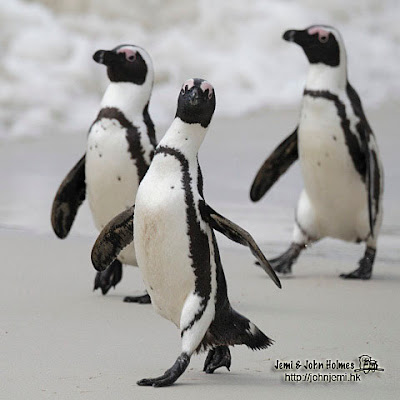(My 300th posting ! I should be getting the hang of it by now !)
Swallow-tailed Bee-eater Merops hirundineus
We stayed at Twee Revieren, which is the park HQs, located at its' southern point. The names means "Two Rivers" and the site is the confluence of the Aoub and Nossob rivers, both usually dry.
It seems incredible that, a century ago, the land was parceled off and farmers invited to try to make a living from the area. Most had given up by the time people started to get concerned about the wildlife in the 1930s. I'd read about the dry riverbeds, but they were broader and drier than I'd imagined.
There are "waterholes" here and there, and my experience of Kruger National Park twenty years ago made me think of deep hollows with a body of water the size of a tennis court. Well, I was wrong about Kgalagadi, the "waterholes" are really just concrete troughs, fed by small pipes from tanks fed by arterial water drawn up by solar or wind power.
Ho hum. Anyway, there was always plenty to see around the parts of the park we visited, which was really just a "v" shape, with each side about 30km long. The hire car didn't take to the sandier road sections, and getting out and digging wasn't an attractive option in lion country.
Yes, lions. Here are the first ones we saw, on our first evening. We saw another car had stopped, and soon saw why.
We ended up seeing lions every day. These two different males were more obliging.
Lion Panthera leo
Cheetahs, too. We sighted one on a ridge line and saw there was a family party of four. Then they crossed the road within yards of us.
Cheetah Acinoryx jubatus
Plenty of "cat-food" on the hoof out there..
Springbok Antidorcas marsupialis
Gemsbok Oryx gazella
And some good birds around. Not a cosmic variety, but enough to make the place more interesting for birders.
Yellow-billed Hornbill Tockus leucomelas
Namaqua Sandgrouse Pterocles namaqua
Burchell's Sandgrouse Pterocles burchelli
Northern Black Korhaan Afrotis afraoides



































